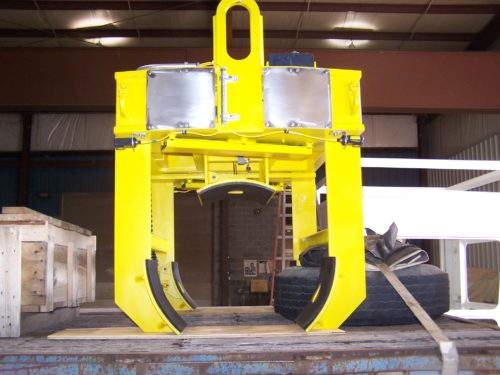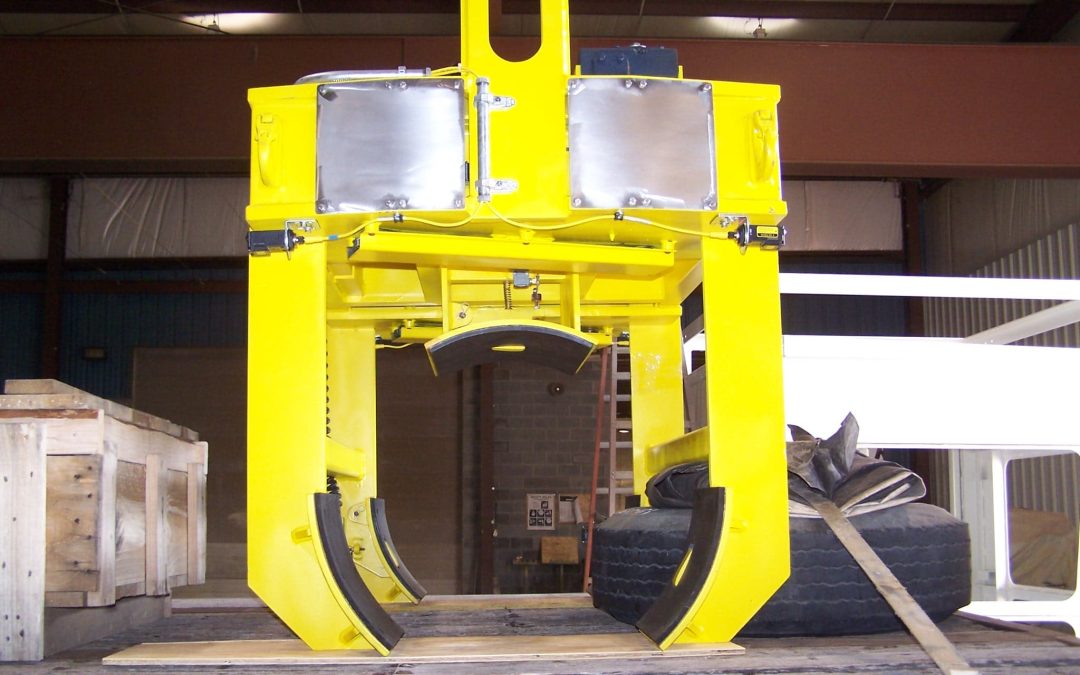Below-the-hook lifts are crucial for the safe transport and movement of loads when using cranes and hoists. The goal of a below-the-hook lift is to attach a load to the crane or hoist and secure that load until it reaches its final destination. The lift serves as the connection between a hoist and its load, and must therefore be able to sustain heavy loads while maintaining a high level of stability.
A below-the-hook lift may consist of magnets, lifting beams, grapples, or vacuum lifters, and often includes secondary components such as slings, hooks, and rigging hardware. The materials and equipment used in below-the-hook lifts vary widely depending on the application. Due to their critical nature, below-the-hook lifts are highly regulated by the American Society of Mechanical Engineers (ASME), which provides guidelines for designs, inspections, and testing to ensure a standard level of quality.
An Overview of Below-the Hook-Lifting
Cranes and hoists are necessary for a wide variety of circumstances, which often requires engineers to customize the design of below-the-hook lifts to meet the needs of a given project or application. Below-the-hook lift designs are frequently adapted to account for a load’s center of gravity, shape, and size, and customization of these designs helps to guarantee safe operation of crane equipment and efficient transport of the load or loads.
In order to ensure that the below-the-hook lift is designed for optimal use, both the manufacturer and the customer participate in the engineering process for each application. This ensures design engineers and project managers consider the precise needs for the project so that they can produce a lifting solution that meets every need.

There are a wide variety of mechanical below-the-hook devices for use with cranes and hoists, including:
- Lifting magnets
- Spreader and lifting beams
- Crane grapples
- Custom Devices
Each design can be specifically modified with custom designed claws, hooks, tongs, and latches to ensure the most secure fit. Depending on the needs of the application, mechanical below-the-hook devices can be operated using electronic or hydraulic means.
Advantages of Below-the-Hook Lifting Devices
Below-the-hook lifting devices are the ideal option to provide the safest and most reliable load transport. Although traditional slings of wire rope, alloyed metal chains, or durable synthetic materials are easier to construct, they are not the safest way to move loads and often move or shift unexpectedly. Unpredictable load bearing puts both equipment and workers at risk, especially when transporting loads with an unusual shape, size, or weight.
Below-the-hook lifts are specifically designed to ensure optimal control of the load. Not only do they enhance the safety of the worksite, they save you time and money that would otherwise be spent finding a creative workaround with a sling or other existing equipment.
Since they are highly customizable, below-the-hook lifts are useful for even the most difficult loads. For example, if your project requires the ability to lift loads with varying centers of gravity, they can easily be managed with a custom designed below-the-hook lift with an adjustable bail. Whatever your project needs, a lifting device can be designed to move your loads more efficiently and safely.
Below-the-Hook Lifting Devices from American Crane
Below-the-hook lifting devices must be carefully designed in collaboration with experienced engineers and customers in order to ensure the safety and security of load transport in any project or application. At American Crane, we pride ourselves on providing the highest-quality custom cranes and hoist equipment in the industry. Our knowledgeable and experienced engineers are capable of designing systems to secure and move loads for a wide range of projects and applications. For more information on our below-the-hook lifts, contact us today.


